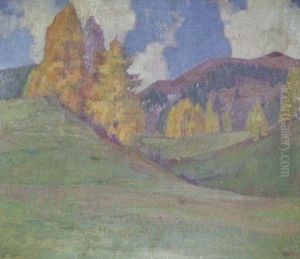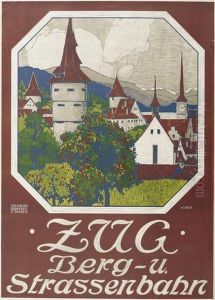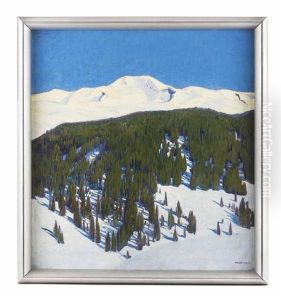Walter Koch Paintings
Walter Koch was a German architect and artist, born in 1880 and passing away in 1962. His contributions to architecture and the visual arts are noted for their blend of traditional motifs with the burgeoning modernist movements of the early 20th century. Koch's work traversed a period of significant change in the arts, reflecting the tumultuous shifts in European society and culture from the late 19th century through the aftermath of the Second World War.
Koch's education and early career were rooted in the rich artistic traditions of Germany, where he was trained in both the practical and theoretical aspects of architecture and design. Like many of his contemporaries, he was influenced by the Jugendstil movement, the German counterpart to Art Nouveau, which sought to create a new style free from the historicism that dominated 19th-century art and architecture. However, as his career progressed, Koch began to incorporate more elements of modernism into his work, reflecting the broader shifts within the art world towards abstraction and minimalism.
Despite the modernist influences, Koch's work remained deeply connected to the natural world and traditional craftsmanship, a testament to the Jugendstil movement's enduring impact on his aesthetic philosophy. He was adept at merging functionalism with aesthetic beauty, a hallmark of early modernist architecture. His buildings often featured innovative use of materials and structural techniques, yet retained a sense of harmony with their surroundings, exemplifying the ideal of Gesamtkunstwerk or 'total work of art' that sought to unify art, craft, and architecture.
Koch's legacy is not only found in his contributions to architecture and the visual arts but also in his role as an educator and mentor to a generation of architects and designers who would navigate the complex post-war landscape of rebuilding and remembrance. Throughout his career, he maintained a commitment to the social and cultural responsibilities of the architect, believing in the power of design to improve the human condition.
Walter Koch's passing in 1962 marked the end of an era that bridged the old world and the new, encapsulating the struggles and triumphs of a Europe in transition. His work remains a testament to the enduring value of beauty, function, and social relevance in architecture and the visual arts.



